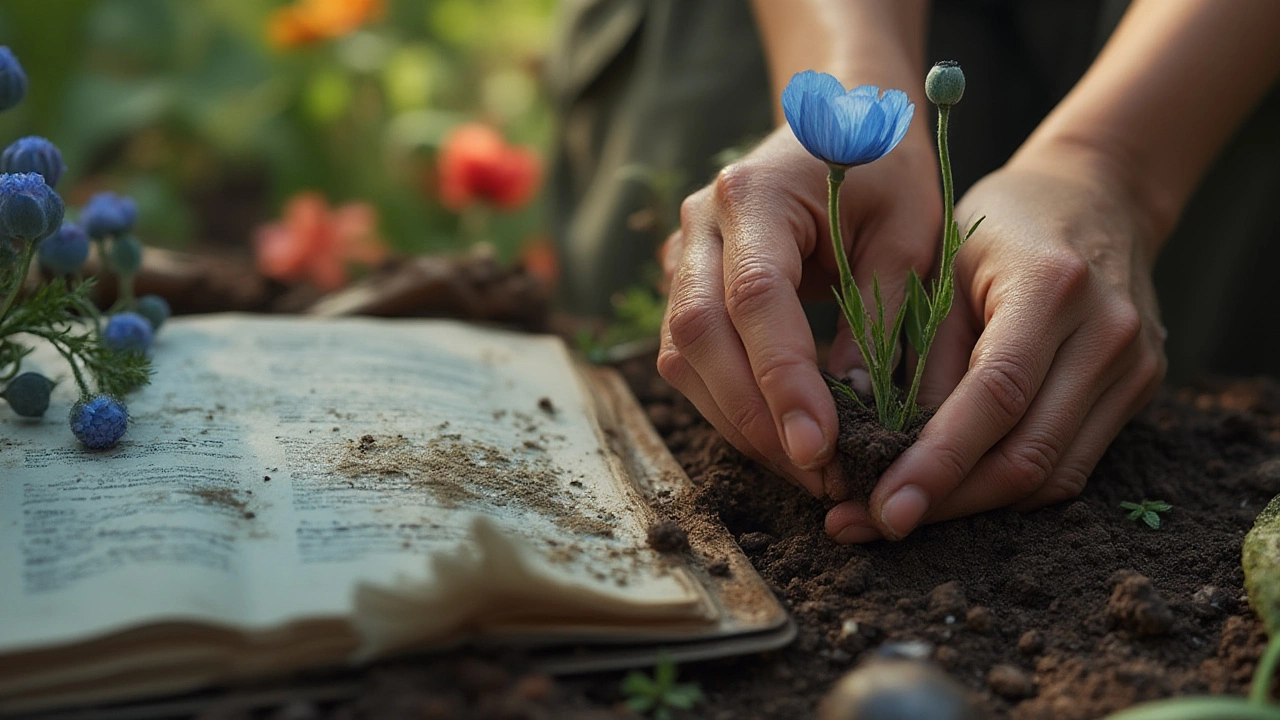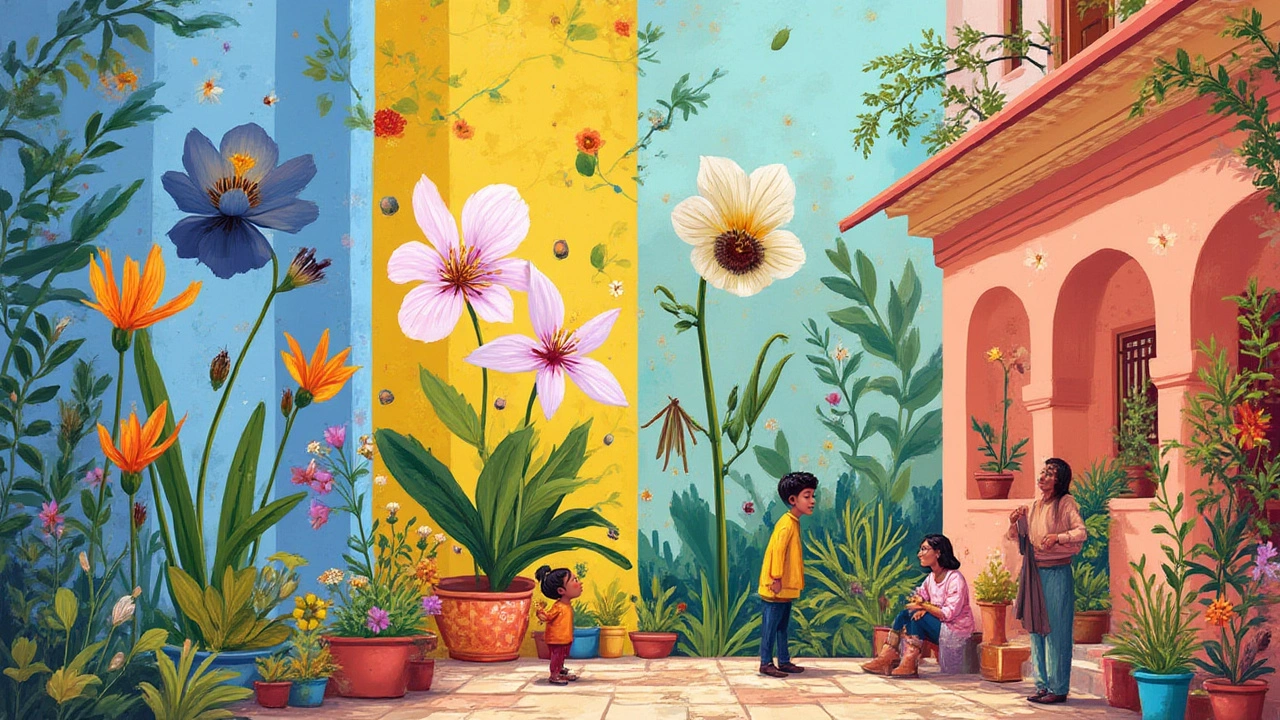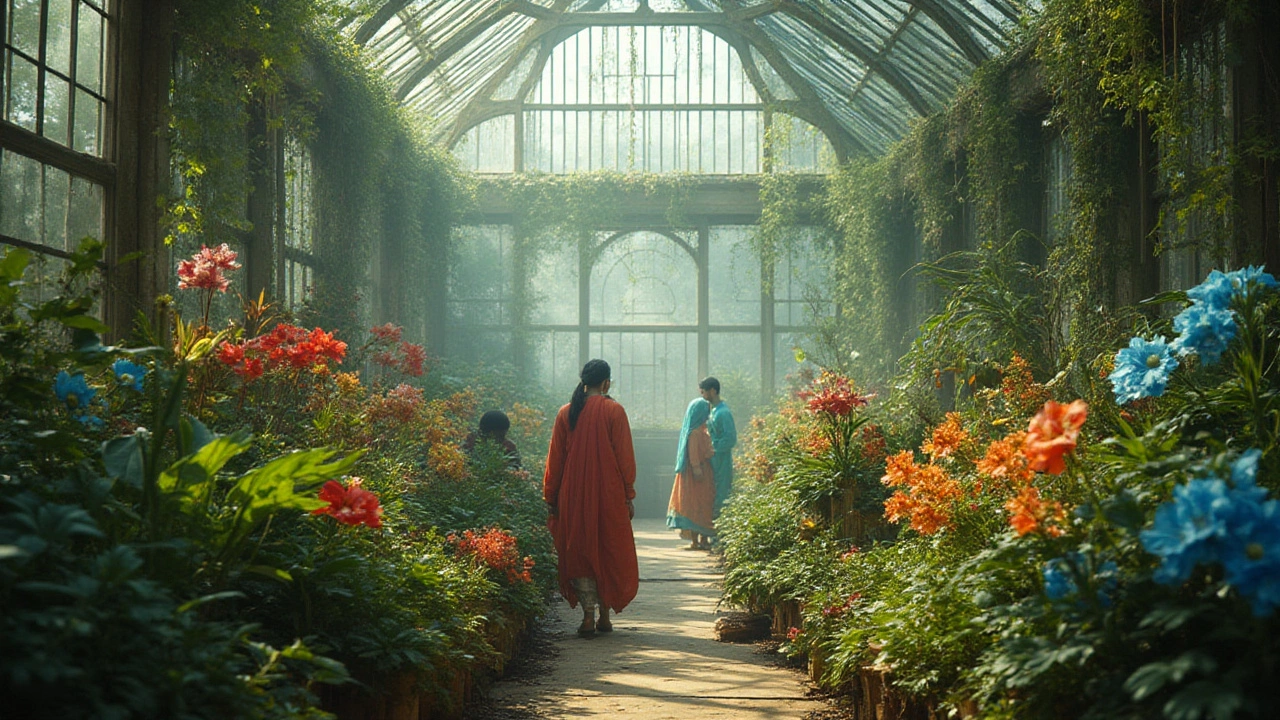Can a flower outsmart a gardener? Ask anyone who’s tried coaxing a blue poppy or a ghost orchid into bloom. There’s beauty in the impossible. Every year, thousands of hopefuls take on the floral world’s greatest challenges, only to learn—sometimes the hard way—that not all seeds are created equal. The most stubborn blooms aren’t just fussy about soil or water; they push growers to the edge, changing the way you think about patience, weather, and how much dirt can end up under your fingernails. Before you order those rare seeds, let’s break down the real labyrinth of growing the world’s trickiest flowers.
The Blue Poppy: The Everest of Flower Gardening
Forget the usual backyard suspects. If you ask which flower torments gardeners the most, the blue poppy (Meconopsis betonicifolia) takes the crown. Its sky-colored petals can stop you in your tracks, but getting there is almost mythic. Native to the cool, misty mountains of Tibet, these flowers have a love affair with climates that rarely dip above 65°F, and summers that forget all about harsh sun or dry spells. They collapse in heat. They sulk in dryness. Try this in Texas, and you’ll wonder if the seeds are just blue-dyed confetti. Blue poppy seeds need to be sown indoors with painstaking care. Keep them moist, not drenched—just like their home high in the Himalayan mists. Most tricky of all, they crave acidic, humus-rich soil, and the roots absolutely despise being disturbed. Imagine a guest so sensitive that even moving the soup spoon sends them into a tantrum. That’s the blue poppy. They can take several seasons even to show a worthy bud, if at all. Add in how rarely they self-seed in the wild, and you’ve got one of the least forgiving—but most coveted—flowers anywhere.
Here’s a table that makes it painfully clear why blue poppy growing isn’t for faint hearts:
| Factor | Blue Poppy Requirements | Usual Garden Standard |
|---|---|---|
| Temperature | 50–65°F (Cool, stable) | Varied, often warmer |
| Soil pH | Acidic (5.0–6.0) | Neutral to slightly acid |
| Moisture | Constant, no soggy feet | Moderate water |
| Sunlight | Bright, indirect/morning | 6+ hours direct |
One thing people miss: blue poppies rarely survive sultry nights and hate root disturbance, so transplanting seedlings can end the adventure before it begins.
Wild Orchids: Champions of Humidity and Patience
The word ‘orchid’ feels elegant, sure, but wild types flip elegance into obsession. While grocery store orchids can last months with a little hydration and a windowsill, their wild kin—especially the infamous ghost orchid (Dendrophylax lindenii)—could leave even experienced growers staring at empty pots for years. These flowers don’t actually grow in soil at all. Instead, they hook onto tree bark in swampy, humid sites—think far south Florida, in spooky, bug-infested cypress domes. Ghost orchids demand air as moist as a sauna, with daytime humidity rarely below 75%. Their roots cling to rough bark, soaking up moisture that’s almost always present—but not so much that they drown.
It’s not just about moisture. The right fungal partner (yes, fungi!) must be present. Without it, even perfect-looking seeds will never sprout. Natural pollinators are rare too—just a handful of giant moths with extra-long tongues. Some years, wild ghost orchids won’t bloom at all, even with perfect weather. Growing them from seed at home almost never works. Tissue culture, wild-collected root cuttings, and micro-environment terrariums are the only shot most people have. The tiniest mistake with fertilizer or watering, and it’s game over.
Fun fact: Estimates suggest that fewer than 2,000 mature ghost orchids remain in the wild, and most are hidden deep in protected swamps that can only be reached by sloshing through (sometimes waist-deep) water. Botanist Mike Owen once spent days just to photograph one in bloom. That’s some dedication for a flower!

Corpse Flower and Titan Arum: Giant, Stinky, and Incredibly Picky
When it comes to bragging rights, nothing beats growing a titan arum (Amorphophallus titanum), often called the corpse flower. This beast has the world’s largest unbranched flower structure—up to ten feet tall—and only blooms for two or three nights before collapsing. Even botanical gardens compete for who can coax a bloom, because this plant is beyond stubborn. Its native home is the steamy, equatorial rainforests of Sumatra, where the soil is loose, rich in dead wood, and often nearly 100% humidity. The plant lives most of its early life as a single massive tuber, taking seven to ten years (sometimes much longer!) before it ‘decides’ to flower.
Besides its size, the titan arum is infamous for its stench—rotting flesh, to attract flies and beetles. At home, it needs a greenhouse with perfect humidity and warmth, filtered sunlight and no sudden temperature drops. Skip a feeding at the wrong moment, or let the soil dry out, and the tuber will sulk or rot. A single plant takes at least a wheelbarrow full of special compost, and the water bills alone could floor you. It’s no wonder few private individuals have ever managed a bloom. Even the New York Botanical Garden only gets a bloom every few years, despite round-the-clock monitoring.
The rare flowering events draw thousands of visitors—sometimes people line up for hours just to catch a whiff of the short-lived stink. This is less “home plant” and more a badge of honor for serious horticultural warriors.
Enigmatic Desert Flowers: The Ephemeral and Impossible
Here’s a curveball. Some of the world’s hardest flowers aren’t just rare or picky, they’re practically built never to bloom in captivity. Take Welwitschia mirabilis, a bizarre relic from Namibian deserts. It doesn’t look like any ordinary flower—just two sprawling leaves—but the cones it sends up are technically blooms. Welwitschia plants have lived for over 1,000 years, but they need decades to reach flowering age. And they refuse to cooperate unless the conditions match hyper-specific desert fog cycles—cool, salty breezes at night, bone-dry heat by day, and roots able to stretch meters below ground, tapping hidden moisture.
Desert wildflowers as a group can be brutal to manage. For instance, the Arizona ghost flower (Mohavea confertiflora) will vanish for years and only emerge after perfect storms or rare El Niño rains, making wildflower chasers drive hundreds of miles for a glimpse. Trying to recreate this crop of conditions at home is like trying to get a goldfish to whistle. If you’re after ephemeral desert blooms, focus instead on simulating seasonal drought, heat, and lightning-fast watering cycles—but don’t expect a consistent show.

Secrets, Surprises, and Success Stories from Tenacious Growers
If you crave the challenge, there’s a cult of folks who take this obsession to the next level. Top tip? Start ridiculously small and be ready to fail before you ever plan to succeed. For blue poppies, some growers actually fill cold frames with imported Scottish peat moss, replicate spring snowmelt with ice cubes, and shade plants with removable lath screens all summer. Wild orchid chasers set up humidity tents with ultrasonic foggers, add specific mycorrhizal fungus to their bark mixture, and even filter rainwater to avoid mineral buildup. One Brooklyn-based grower spent three years building an indoor gnat-proof ‘jungle closet’ just for a single ghost orchid seedling.
Patience and record-keeping come up over and over. Flower failure isn’t always your fault—sometimes, a change in barometric pressure or a random summer thunderstorm decides the whole game. Trickiest of all: Not all rare seeds or cuttings are the real deal. Honest suppliers are rare. Forums full of seasoned growers swap both warnings and little nuggets of hope—like which brands of sphagnum moss stay damp the longest, or how often you should air out a fungus tank to avoid root rot.
One surprise? Persistence does pay. After years of frustration, it’s not unusual to see a photo online of someone’s first blue poppy flower or a scrappy five-year-old orchid finally making buds. That taste of success? It’s worth the wait. If you’re looking for only easy wins, these blooms will humble you. If you love a good obsession, there’s nothing better.
A quick recap on the hardest flower to grow: These blooms push the edge of not just gardening skill, but creativity, patience, and luck. They teach you to embrace the unknown, experiment with wild setups, and celebrate every bud as a minor miracle. If you want something more than just petunias on the patio, why not give one of these challenges a shot?

